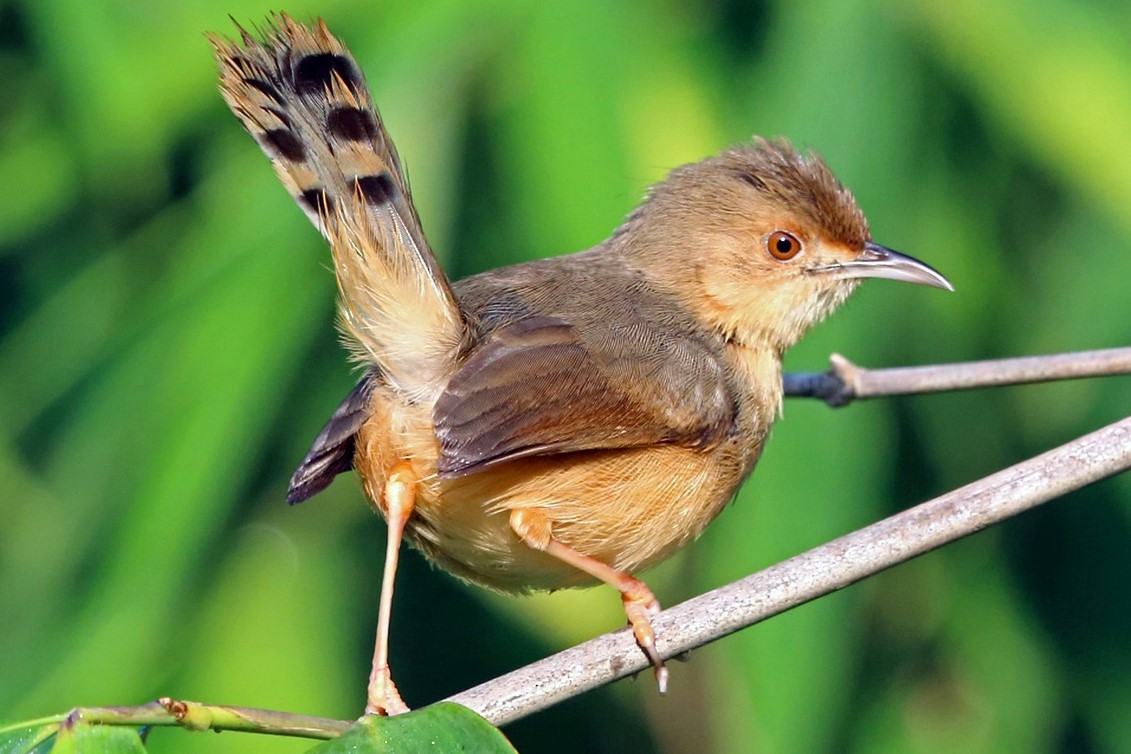Red-faced Cisticola: Uganda’s Tiny Avian Marvel
Red-faced Cisticola: Uganda’s Tiny Avian Marvel. Uganda, often referred to as the “Pearl of Africa,” boasts an incredibly diverse and rich array of wildlife, from the majestic African elephants to the smallest of avian wonders. One such tiny marvel that calls Uganda home is the Red-faced Cisticola (Cisticola erythrops). Despite its diminutive size, this little songbird is a significant and fascinating addition to Uganda’s avian diversity.
Physical Characteristics
The Red-faced Cisticola is a small bird, typically measuring just 10-12 centimeters in length. Its name is derived from the striking red face that sets it apart from other cisticolas. The rest of its plumage is a subtle blend of brown and gray, helping it to blend into the grasslands and wetlands where it is commonly found. The males tend to be slightly more colorful than females, with distinct reddish patches on their faces.
Habitat and Range – Red-faced Cisticola: Uganda’s Tiny Avian Marvel
These tiny birds are widespread throughout Uganda, inhabiting a variety of grassland and wetland environments. They can be found in regions such as the Albertine Rift, Murchison Falls National Park, Kibale Forest National Park, Queen Elizabeth National Park, and many other protected areas across the country.
Behavior and Vocalization
Red-faced Cisticolas are known for their energetic and acrobatic displays during the breeding season. Males fly high into the sky, ascending and descending in erratic, zigzagging patterns while singing their melodious, high-pitched songs. These displays are not only mesmerizing to witness but also serve to attract potential mates.
Their vocalization is a delightful symphony of chirps, trills, and tweets. These sounds are an integral part of the grassland soundscape in Uganda, contributing to the natural ambiance of the country’s protected areas.
Diet and Foraging – Red-faced Cisticola: Uganda’s Tiny Avian Marvel
These birds are primarily insectivores, feeding on a variety of insects, larvae, and small invertebrates. They often forage in the tall grass, where their small size and cryptic plumage make them hard to spot for predators. They have a knack for swiftly moving through the grass in search of their next meal.
Conservation Status
While Red-faced Cisticolas are not currently considered a threatened species, they do face some conservation challenges. Habitat loss due to agriculture and development poses a threat to their populations, as grasslands are often converted into farmland. Conservation efforts and the preservation of grassland and wetland habitats are essential for ensuring the continued well-being of these charming birds.
Ecological Significance
This bird play an important role in Uganda’s ecosystem. As insectivores, they help control insect populations, which can benefit both agriculture and the overall health of their habitats.
Remarks – Red-faced Cisticola: Uganda’s Tiny Avian Marvel
The Red-faced Cisticola may be small in size, but it’s big in charm and ecological significance. This little songbird adds a unique and melodious note to Uganda’s rich tapestry of biodiversity. Protecting their habitats and ensuring their survival is not only important for their species but also for the overall health and diversity of Uganda’s remarkable ecosystems.








